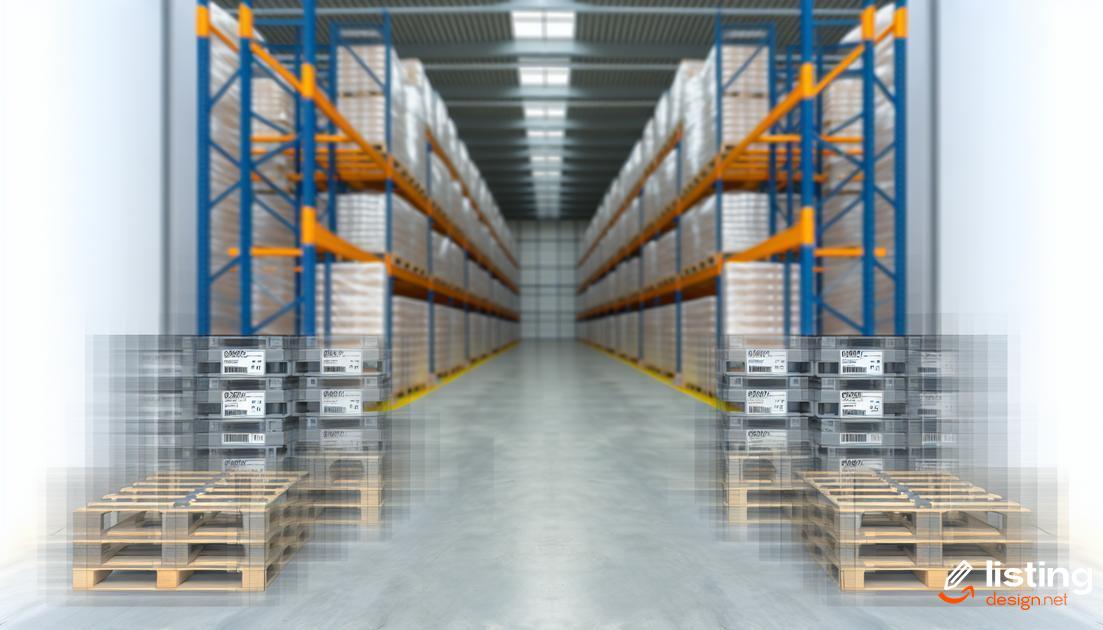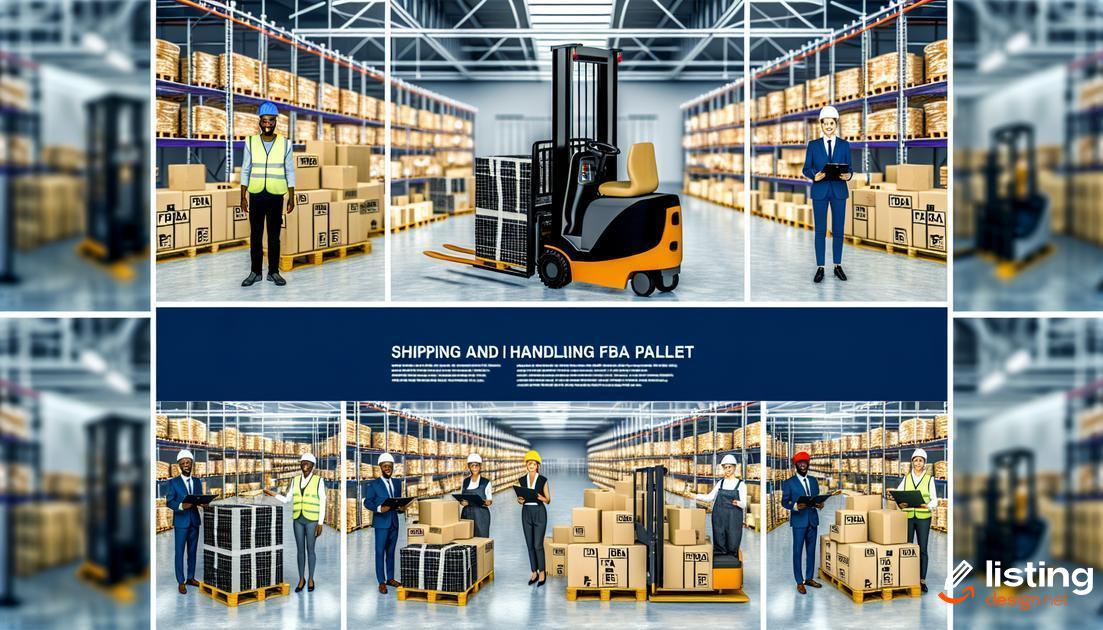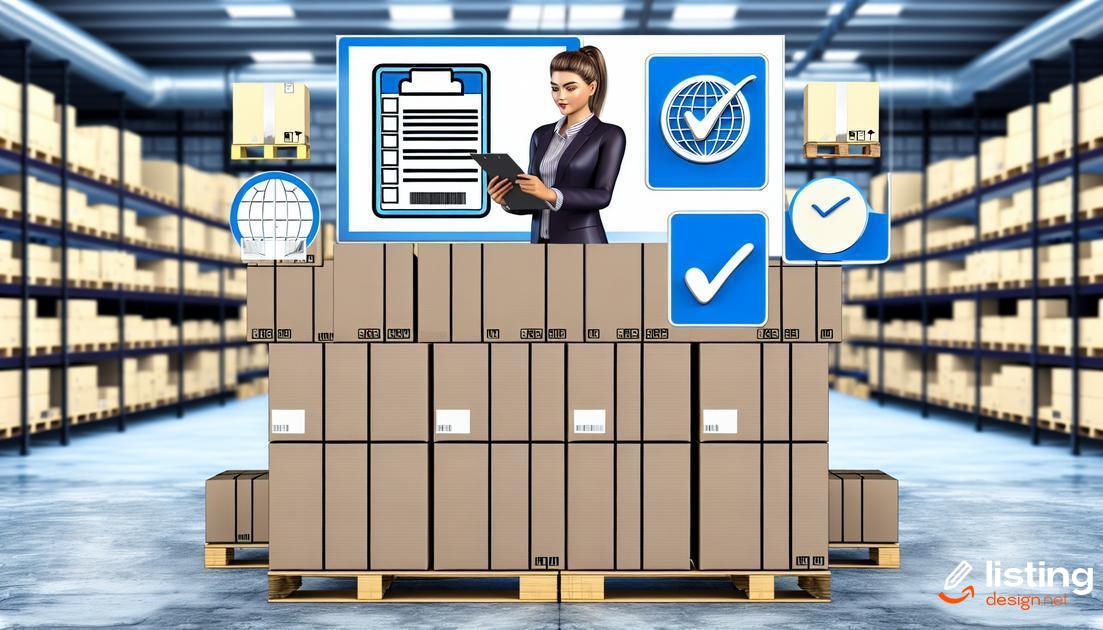Understanding pallet requirements for Amazon FBA is crucial for smooth and efficient fulfillment. This guide will help you navigate the essential guidelines to ensure compliance. From standard specifications to labeling practices, we’ve got you covered. Let’s dive into the details that can significantly impact your fulfillment operations.
Table of Contents
Why Amazon FBA Pallet Requirements Matter
Amazon FBA pallet requirements are crucial for ensuring your products reach the warehouse efficiently and safely. Meeting these standards helps prevent shipping delays, additional charges, and product damage.
Pallets must adhere to specific size and weight guidelines. Standard pallet size for Amazon FBA is 40×48 inches. Pallets should not exceed 72 inches in height, including the pallet itself, and should weigh no more than 1,500 lbs.
Pallets must be in good condition and free of defects. Using broken or damaged pallets can result in refusal of shipment and additional costs. Correct labeling is also essential to avoid misrouting or delays.
Pallet stability is another key aspect. Products should be secured with clear plastic stretch wrap or straps. Properly wrapping or strapping the pallet will help prevent shifting during transit.
Additionally, choosing the right pallet material, whether wood or plastic, is important for durability. Each type has its pros and cons, but both should meet Amazon’s standards for adequate support and hygiene.
By following these specific requirements, you ensure a smoother fulfillment process, maintaining a positive seller rating and customer satisfaction.
Standard Pallet Specifications for Amazon FBA

When it comes to the standard pallet specifications for Amazon FBA, adherence to precise dimensions and requirements is critical. Pallets must measure 40 x 48 inches and be manufactured to support the weight of the goods being shipped. It’s essential to use pallets made from strong, durable wood or plastic to prevent damage during shipping and handling.
Height is another important specification. Fully loaded pallets should not exceed 72 inches, including the pallet itself. Exceeding this height could lead to rejection at Amazon fulfillment centers.
Weight limits are also enforced. The maximum permissible weight for a pallet is 1,500 pounds. Overloading a pallet can compromise stability and safety.
Additionally, pallets must be in good condition—free from broken boards, protruding nails, and any contaminants. This ensures that they can be safely handled by both automated systems and personnel.
Another critical specification is that pallets must have four-way entry. This means that forklifts and pallet jacks can lift the pallet from all four sides, facilitating easier and safer handling.
Sticking to these standard specifications not only ensures compliance with Amazon FBA requirements but also safeguards your products during their journey through the supply chain.
How to Choose the Right Pallet Material
Selecting the best pallet material is crucial for compliance and durability. First, consider wood pallets, which are popular due to their strength and cost-effectiveness. However, they must comply with ISPM-15 regulations to prevent pest infestations.
Plastic pallets are another option, offering durability and uniformity. They are less prone to contamination and generally lighter, which can reduce shipping costs. Keep in mind, though, that they are typically more expensive than wood pallets.
For certain products, metal pallets might be necessary, especially if you need extra strength and resistance to damage. They are ideal for heavy loads but can be costly and heavy.
Lastly, consider the environment where the pallets will be stored or shipped. If exposure to moisture or chemicals is a concern, plastic or metal pallets may be more appropriate than wood.
Choosing the right pallet material involves balancing cost, durability, compliance, and specific use-case requirements to ensure both safety and efficiency in the supply chain.
Pallet Labeling Standards and Best Practices

Proper pallet labeling is crucial for a seamless warehouse and shipping process, especially for Amazon FBA. Labels should be clear and readable, often including information such as shipment ID, contents, and quantity. To ensure compliance, use either a thermal transfer label printer or laser printer to produce high-quality, barcode-readable labels. Apply the labels on at least two sides of the pallet, ideally on the longer sides, ensuring they are positioned 66 inches from the base to be easily scanned.
Best Practices for Pallet Labeling
- Always use durable labels that won’t fade or tear during transit.
- Ensure that all labels include the necessary barcodes and information that Amazon requires.
- Avoid placing labels over seams or edges, as this can cause them to become unreadable.
- Double-check that the shipment ID and other key data match Amazon’s requirements before shipping.
Following these standards and best practices will help prevent delays and penalties, ensuring that your products reach Amazon’s fulfillment centers efficiently.
Common Mistakes to Avoid with FBA Pallets
When dealing with FBA pallets, certain mistakes are frequently made that can lead to penalties or shipment refusals. To prevent these issues, it’s crucial to understand and avoid common pitfalls. One major mistake is not adhering to the maximum height and weight limits set by Amazon. Exceeding these limits can result in your shipment being rejected.
Another frequent error is improper pallet stacking. Overhanging items or uneven distribution can cause instability and increase the risk of damage during transit. Ensure all boxes are uniformly stacked and do not exceed the edges of the pallet to maintain stability.
Improper Label Placement
Failing to place labels correctly is another common issue. Labels should be placed on all four sides of the pallet, and they must be easily readable. Misplaced or missing labels can delay processing and cause confusion at Amazon’s fulfillment centers.
Using Incorrect Pallet Types
Not all pallets are created equal, and using the wrong type can be a costly mistake. Always use pallets that are heat-treated and certified to prevent contamination and meet Amazon’s stringent requirements.
How to Prepare Products for Palletization

When preparing products for palletization, it’s crucial to ensure they meet Amazon FBA’s strict guidelines. First and foremost, all items should be securely packaged to prevent any movement during transit. Use high-quality packing materials like bubble wrap, void fill, and sturdy boxes.
Grouping products by category is advisable for easier handling and inventory management. For example, place heavier items at the bottom and lighter ones on top. This not only maximizes space but also minimizes the risk of damage.
It’s also essential to use appropriate pallet sizes and types. Amazon requires standard 40 x 48-inch pallets, made from either wood or plastic, and capable of supporting heavy loads without breaking. Always inspect pallets for damages before use.
Next, ensure that all boxes are properly labeled.
Each box should display clear and readable labels
that include the FBA shipment ID, product information, and any necessary handling instructions. This step is crucial for smooth processing at Amazon’s fulfillment centers.
Furthermore, stacking boxes correctly is vital. Ensure boxes do not overhang the edges of the pallet, and use stretch wrap to secure the entire load. Proper wrapping helps maintain the stability and integrity of the pallet during shipping.
Finally, consider the overall weight and stability of your pallet. Avoid overloading to prevent accidents and ensure compliance with shipping regulations. Using corner boards can help in keeping the edges strong and prevent damages.
Pallet Weight and Stability Considerations
Pallet Weight: Managing the weight of your pallet is crucial. Each pallet must comply with Amazon’s weight limits, which typically should not exceed 1,500 pounds. Overloading can lead to significant issues, including damage to goods and handling difficulties. Ensure you distribute the weight evenly across the pallet to maintain stability and prevent tipping.
Stability Considerations: Stability is key to a secure shipment. Use appropriate packaging materials like stretch wrap or shrink wrap to secure your goods. Also, consider using corner boards and strapping to add extra stability. If your shipment includes mixed items, place heavier items at the bottom and lighter ones on top to avoid crushing and maintain a low center of gravity.
Shipping and Handling Tips for FBA Pallets

Proper Packaging Materials
To ensure that your pallets are handled safely during shipping, always use high-quality packaging materials. Secure stretch wrap tightly around your pallet to prevent any movement. Use edge protectors to safeguard your products against damage and strapping to keep everything in place.
Optimal Pallet Stacking
When stacking your products, maintain uniformity and balance. Avoid overhanging products or uneven weight distribution to prevent pallet instability. Heavier items should be placed at the bottom, with lighter items on top.
Labeling and Documentation
Proper labeling is essential for smooth handling and shipping. Ensure that each pallet has clear, visible labels on all sides with the necessary information, including SKU, destination, and any special handling instructions. Proper documentation should accompany each shipment to avoid delays.
Handling and Transport
Educate your handling team on the correct methods to transport and move FBA pallets. Use appropriate equipment like pallet jacks and forklifts. Always lift and lower the pallets carefully to avoid damage.
Working with Carriers
Choose reliable carriers experienced in FBA shipments to handle your pallets. Communicate your requirements clearly and confirm that the carrier can accommodate the specific needs of FBA pallet shipments. Regularly review your carrier’s performance to ensure they meet Amazon’s standards.


